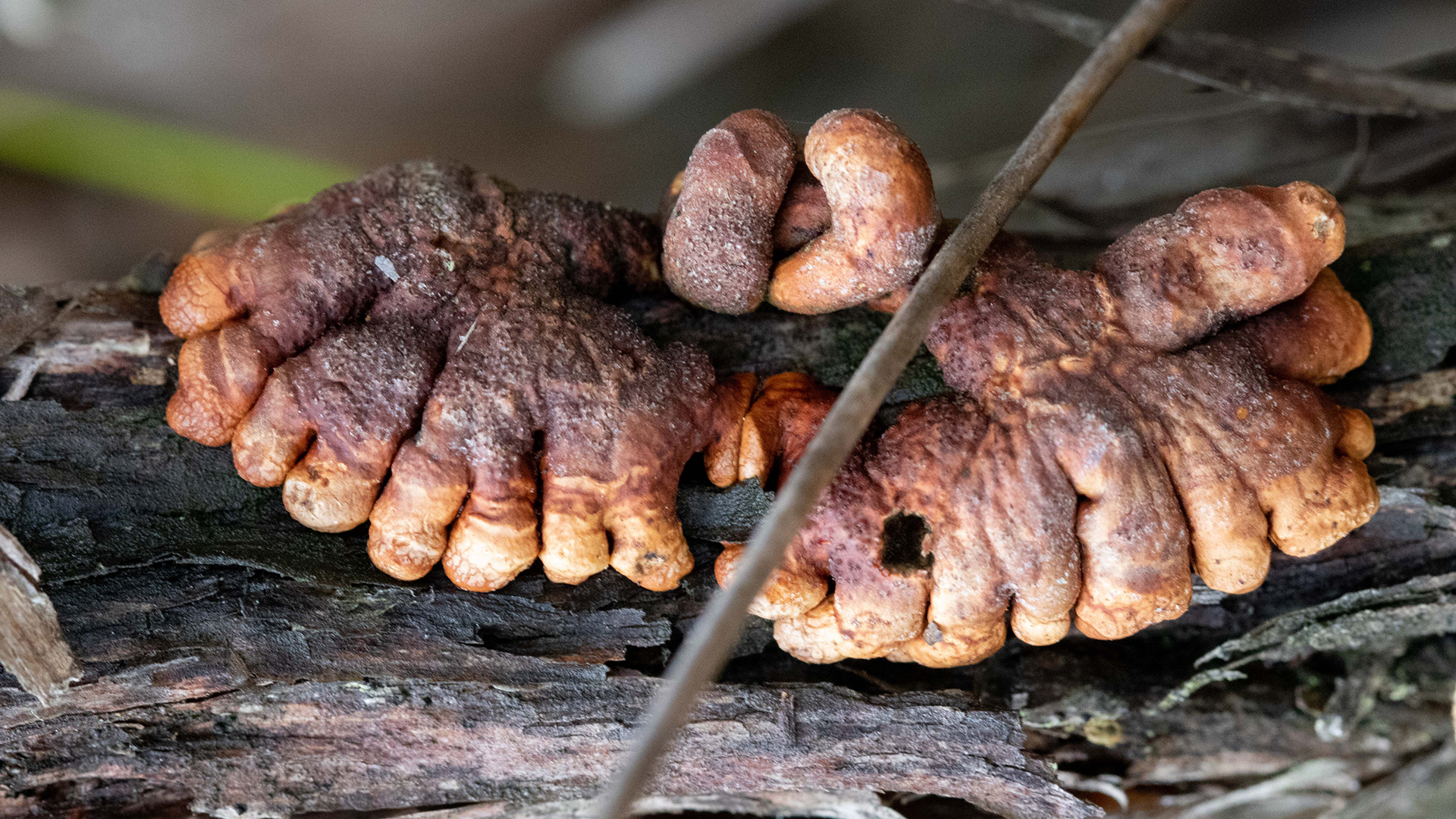Rare 'zombie fingers' parasitic fungus is hanging on (barely) in Australia
The endangered fungus is known from just a handful of locations.

A fungus that resembles decaying human fingers is endangered but hanging on for dear life in Australia, wrapping its zombie-like digits around fallen trees on an island near the continent's southern coast.
Hypocreopsis amplectens is commonly known as tea-tree fingers, as its shape resembles pudgy human fingers clinging to wood on the forest floor, though the mottled pinkish-brown color and texture of the fungus make those fingers look more dead than alive.
Tea-tree fingers are extremely rare, known to exist in just a handful of locations on the mainland of Victoria in southeastern Australia. But an expedition led by naturalists from Australia's Royal Botanic Gardens Victoria (RBGV) recently proved that the fungus has tightened its grip in at least two other places in the Australian state.
Related: Microscopic worlds gallery: Fascinating fungi
The fungus' fleshy appearance may be ghastly to humans, but it evolved into that bizarre shape to help it survive, said Michael Amor, a postdoctoral fellow at RBGV and a leader of the fungus-finding expedition.
"As it is found on dead, often disconnected branches, the finger-like form may help it be flexible enough to grow over curves/crevices and cope with bending, cracking and falling," Amor told Live Science in an email.
The fungus is a parasite, growing on another fungus host that decays wood. It's also a tasty snack for moth larvae and other insects, "so it is an example of the complex food-webs that characterise intact ecosystems," Amor said.
Get the world’s most fascinating discoveries delivered straight to your inbox.
A team of researchers and volunteers reported finding tea-tree fingers in two locations at a protected national park on French Island, Victoria, according to an RBGV statement. One of those spots holds the largest recorded population of tea-tree fingers — over 100 individual fruiting bodies, more than the total fungus population at all the sites on the mainland.
Finding so many examples of these dead-looking digits offers hope for the parasite's future, as a warming climate and habitat loss are causing the fungus to lose its grip on the mainland, according to the statement.
"Tea-tree fingers is a highly specialised fungus that requires a particular set of conditions to grow. It needs specific tree species to occur at just the right density to provide ideal humidity and canopy cover," Amor explained in the email. "Large areas of natural vegetation are required to allow for these precise micro-climates to occur and, sadly, we are losing these at an alarming rate."
Amor is using DNA analysis to see if habitat fragmentation and isolation of the fungus populations has affected their genetic health. Other ecologists are investigating the delicate balance of organisms in the fungus' ecosystems, to pinpoint the conditions that allow the fungus to thrive.
Meanwhile, the dead-finger fungus will just keep doing what it does best: hanging in there.
Originally published on Live Science.

Mindy Weisberger is a science journalist and author of "Rise of the Zombie Bugs: The Surprising Science of Parasitic Mind-Control" (Hopkins Press). She formerly edited for Scholastic and was a channel editor and senior writer for Live Science. She has reported on general science, covering climate change, paleontology, biology and space. Mindy studied film at Columbia University; prior to LS, she produced, wrote and directed media for the American Museum of Natural History in NYC. Her videos about dinosaurs, astrophysics, biodiversity and evolution appear in museums and science centers worldwide, earning awards such as the CINE Golden Eagle and the Communicator Award of Excellence. Her writing has also appeared in Scientific American, The Washington Post, How It Works Magazine and CNN.


